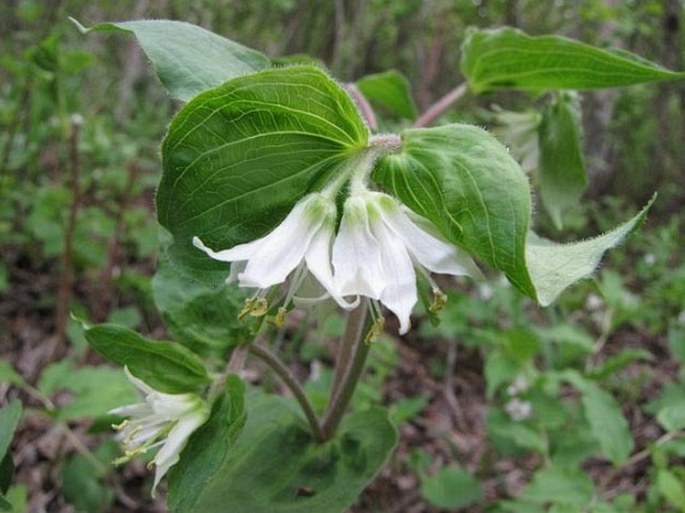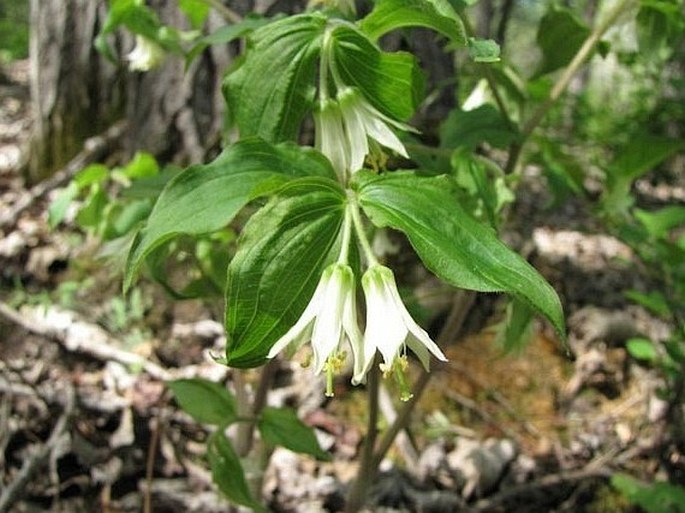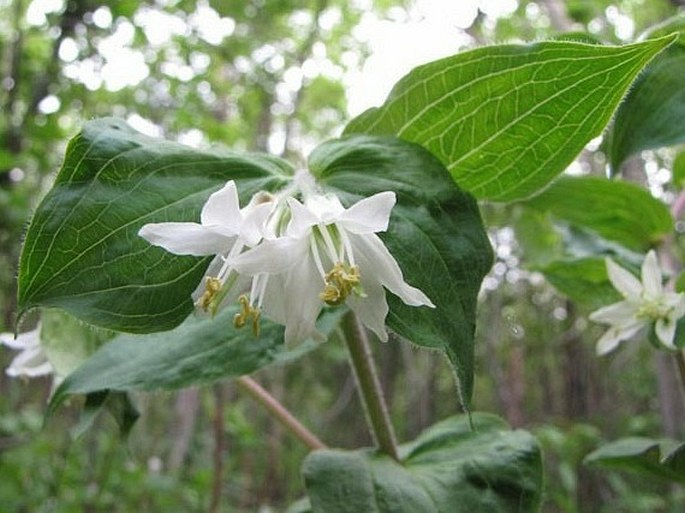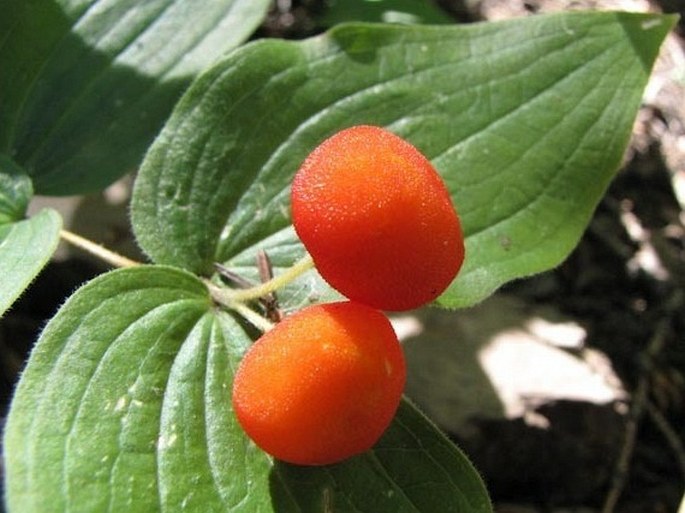Syn.: Disporum canadense Shafer, Disporum majus (Hook.) Britton, Disporum trachycarpum (S.Watson) Benth. et Hook. f., Disporum trachycarpum var. subglabrum Kelso, Lethea trachycarpa (S. Watson) Farw.
Family: Liliaceae Juss.

Distribution: North American species found mostly in the west of the continent, in all Canadian provinces with exception of Territories, Quebec and Maritimes and in US states from Washington to Dakotas and south to New Mexico to Arizona and absent in California.
Ecology: Moist deciduous and mixed forests, open coniferous forests, close to water, plains to subalpine in elevations from 300 to 2500 m. Blooms from May to June.

Description: Perennial herb, stems 20–60 cm tall, forked, branches drooping, from thick spreading rhizome. Leaves alternate, dark green, glabrous, oval to lanceolate, hairy on edges, prominent veins, 3–8 cm long, 2–5 cm wide, stalkless to clasping. Flowers solitary to 4 flowers per leaf axil at branch tips. Flowers white to yellowish with greenish base, narrowly bell-shaped, 10–20 mm long, nodding, tepals 6, sharply lanceolate, stamens 6, pistil 1. Fruit is a berry, reddish orange to deep red, rough surface (trachycarpa), 1 cm across, seeds 4–18.
Notes: Some tribes consumed these berries but some tribes considered them poisonous due to their vivid colours. Rodents and grouse feed on these berries.




These images were taken in Canada, Calgary, Edworthy Park (May and August 2012).


